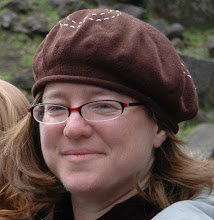
Recently I visited the class of Holly Litwin at Portland Jewish Academy. Her fifth grade students were studying the American colonies. Holly was noticing how few resources there were for young students on Jewish life in the colonies. One of the activities we did while I was there was an analysis of gravestones from Jews in the colonies. I choose three stones: one for a small Jewish boy (Isaac Lopez), one from a slave owned by the boy's uncle (Aaron Lopez), and one by a man from Curacao (Gabriel A Levy).
I included an example of a slave's stone because slavery had come up as a topic in their general studies of the colonies. Years ago the Nation of Islam proposed that Jews were responsible for the slave trade. This allegation is clearly false. It is important for students to understand, however, that almost every aspect of the economy in the colonies was tied to slavery either directly or indirectly: Jews often were prohibited from selling slaves, but some men (like Aaron Lopez) did have slave ships. You can read more about this issue in a wonderful book by Eli Faber called Jews, Slaves, and the Slave Trade: Setting the Record Straight, that clears up a lot of misconceptions about Jewish involvement in the slave trade. Holly's students were interested in the fact that some Jews owned slaves, and some students were sad about it. I wondered if I was right to bring it up at all?
Here is the Gravestone Handout we used. Feel free to use it in your own class.
If you are interested in learning more about why scholars are interested in gravestones and how to analyze them, see my Gravestones Study Guide on my Indian Converts Collection website.
Question: If you teach young students about early American Jews, would you bring up the issue of slavery? Why or why not?
Saturday, February 13, 2010
Classroom Resources: Gravestones 1
Labels:
Classroom Resources,
Curacao,
Gravestones,
Newport,
Suriname
Subscribe to:
Post Comments (Atom)



0 comments:
Post a Comment